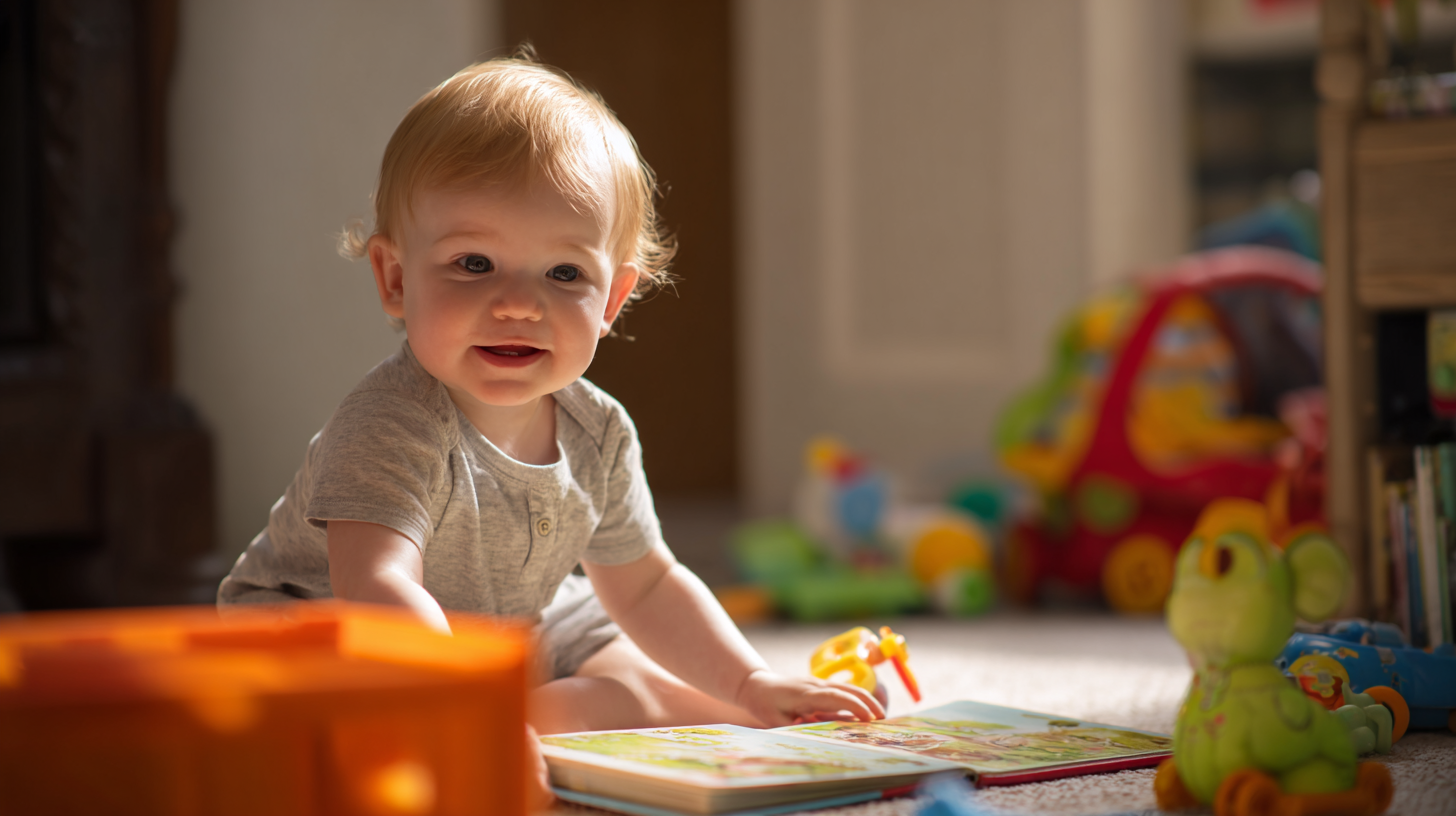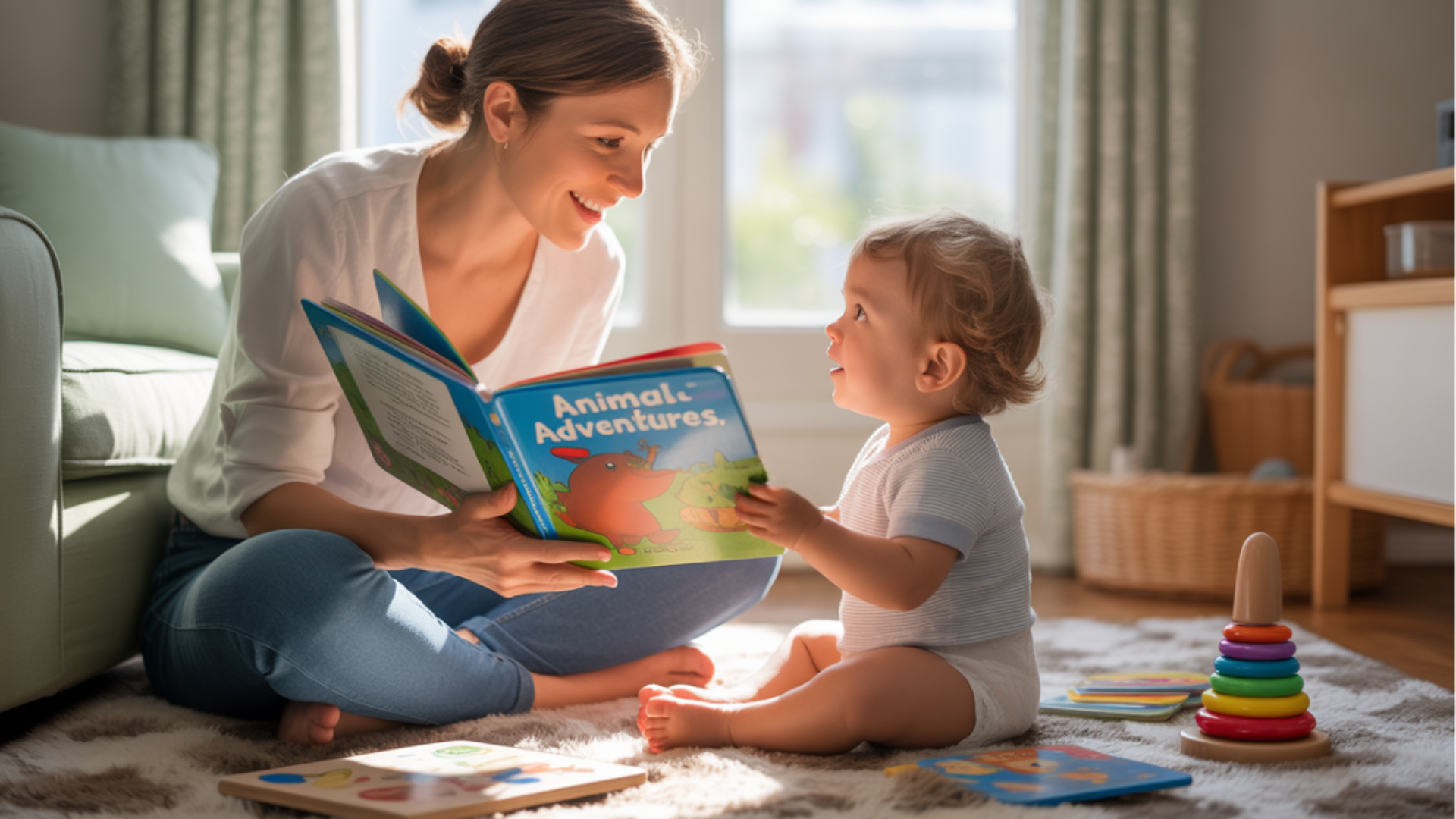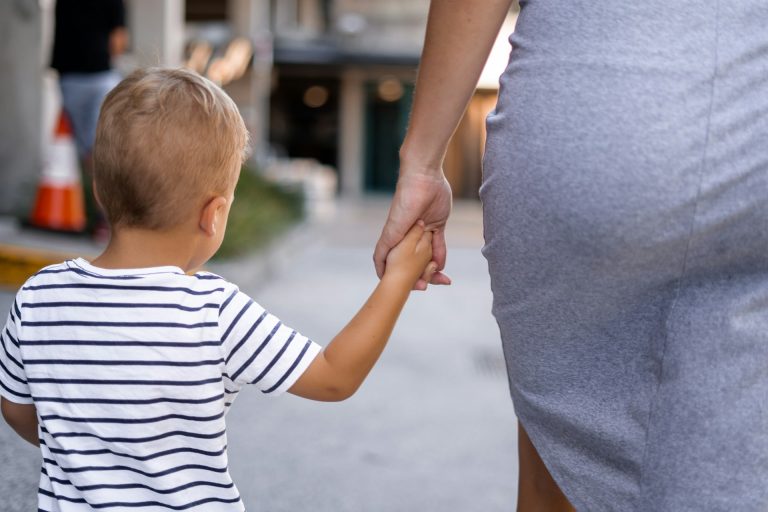How Many Words Should an 18-Month-Old Say?

Watching a child’s language develop is one of the most exciting parts of parenting, filled with first words, funny mispronunciations, and heartwarming attempts at communication.
Many parents find themselves wondering, “How many words should my 18-month-old say?” This question becomes even more pressing when comparing their child to others at playdates or family gatherings.
Understanding typical language milestones helps parents know what to expect during this important developmental period.
While there are general guidelines for vocabulary growth, every child develops at their own pace.
Some toddlers are early talkers who seem to learn new words daily, while others take their time building their vocabulary. Both paths are completely normal parts of healthy language development.
Typical Language Milestones for 18-Month-Olds
Most 18-month-olds have a vocabulary ranging from 20 to 50 words, though this range can vary significantly. Some children may say as few as 10 words while others might use 100 or more.
The Centers for Disease Control and Prevention suggests that toddlers should have at least three words beyond “mama” and “dada” by this age.
More important than the exact number is if children are making steady progress in their communication skills. At 18 months, most toddlers can understand basic instructions like “come here” or “get your shoes.”
They typically respond when their name is called and show interest in communicating with others through gestures, sounds, and words.
The key is looking at the overall pattern of development rather than focusing solely on word count.
Children who are actively trying to communicate, even if they’re not using many clear words yet, are often developing normally.
Their attempts at communication show they understand that words have meaning and purpose.
What Kinds of Words Do 18-Month-Olds Say?

18-month-olds typically learn words that are most meaningful in their daily lives. These usually fall into several categories that reflect their immediate needs and interests.
| Category | Examples | Why These Come First |
|---|---|---|
| People | “Mama,” “Dada,” “Baby” | Most important relationships in their world |
| Everyday Objects | “Ball,” “Cup,” “Book” | Items they interact with frequently |
| Actions | “Go,” “Eat,” “Up” | Express immediate needs and desires |
| Needs | “Milk,” “More,” “Help” | Essential for communicating basic requirements |
| Animal Sounds | “Woof,” “Moo,” “Meow” | Fun sounds that often come before actual animal names |
Many 18-month-olds also begin experimenting with early two-word phrases. These might include combinations like “more milk,” “go car,” or “mama up.”
These simple phrases demonstrate that children are starting to grasp how words work together to form meaning.
Why is there Such a Wide Range?
The variation in vocabulary size among 18-month-olds happens for several completely normal reasons.
Some toddlers are naturally more focused on physical development during this period, devoting their energy to walking, climbing, and studying their environment.
Others may be more interested in language and communication from an early age.
Children growing up in bilingual or multilingual homes may have smaller vocabularies in each language, but they often have a larger total vocabulary when both languages are considered.
These children are learning the complex skill of switching between languages, which is an impressive cognitive achievement. The most important factor is consistent growth rather than total word count.
How to Encourage Language Development

Supporting a toddler’s language development doesn’t require expensive toys or formal lessons – it happens through loving interactions throughout the day.
The most effective strategies are simple activities that parents can easily incorporate into their existing routines with their child.
1. Talk Throughout the Day
Narrate daily activities like diaper changes, meal preparation, and getting dressed. This gives children constant exposure to new words and helps them connect language to real-world experiences.
Even simple descriptions like “now we’re putting on your red shirt” provide valuable language input.
2. Read Together Daily
Reading books together exposes children to vocabulary they might not hear in everyday conversation.
Picture books are particularly helpful because they connect words with images. Even if the child doesn’t sit still for entire stories, looking at pictures and naming objects provides language learning opportunities.
3. Expand on Their Words
When children say single words, parents can expand them into short phrases. If a child says “ball,” the parent might respond with “yes, a big blue ball” or “the ball is round.”
This technique shows children how to build longer sentences while validating their communication attempts.
4. Play and Label Objects
During play, parents can naturally introduce new vocabulary by naming toys, actions, and experiences.
Playing with blocks might include words like “stack,” “tall,” “fall down,” and “build.” This makes learning feel fun rather than like a lesson.
When to Seek Professional Advice
While most children develop language at their own pace, there are certain signs that might indicate professional guidance would be helpful.
Understanding these indicators can help parents make informed decisions about when to consult with a speech-language pathologist.
Signs That May Indicate a Need for Support
While most children develop language at their own pace, certain signs might suggest that professional guidance would be helpful.
| Area of Development | Potential Concern | What This Might Look Like |
|---|---|---|
| Vocabulary | Using fewer than 10 words consistently | The child has a very limited spoken vocabulary despite understanding more |
| Communication Skills | Not pointing to objects or pictures when asked | Doesn’t point to familiar items in books or around the house |
| Imitation | Not imitating sounds, words, or gestures | Doesn’t copy simple actions, sounds, or attempt to repeat words |
| Language Loss | Losing words they previously used | A child stops using words they once said regularly |
| Responsiveness | Not responding to their name regularly | Doesn’t look or respond when name is called from across the room |
| Comprehension | Difficulty following simple instructions | Struggles with basic requests like “come here” or “get your shoes” |
These indicators don’t necessarily mean there’s a problem, but they can help parents decide if to consult with a speech-language pathologist.
The Value of Early Intervention
If parents have concerns about their child’s language development, consulting with professionals can provide valuable guidance and peace of mind.
Speech-language pathologists can assess if development is within normal ranges and provide strategies for supporting language growth at home.
Early intervention services are most effective when started as soon as possible.
Many communities offer free evaluations for young children, and getting professional input early can prevent minor concerns from becoming larger challenges later.
Conclusion
Every child develops language at their own unique pace, and there’s a wide range of what’s considered normal at 18 months.
Rather than focusing on exact word counts, parents can celebrate each new word and communication attempt their child makes.
Creating a language-rich environment through talking, reading, and playing together supports healthy development regardless of where a child falls on the vocabulary spectrum.
The most important thing is steady progress and active attempts at communication.
Share your toddler’s language milestones in the comments below – your experience could encourage other parents guiding this exciting developmental trip.
Frequently Asked Questions (FAQ)
Should I Worry if My Child Only Says a Few Words?
Not necessarily – some children are “late bloomers” who experience rapid language growth after 18 months, and overall communication attempts matter more than exact word counts.
Is Babbling Still Normal at 18 Months?
Yes, babbling often continues alongside real words and should sound more speech-like and varied than when they were younger.
What if My Child Uses the Same Word for Everything?
This overgeneralization is completely normal and shows that children understand words have meaning, even if they haven’t figured out specific meanings yet.






